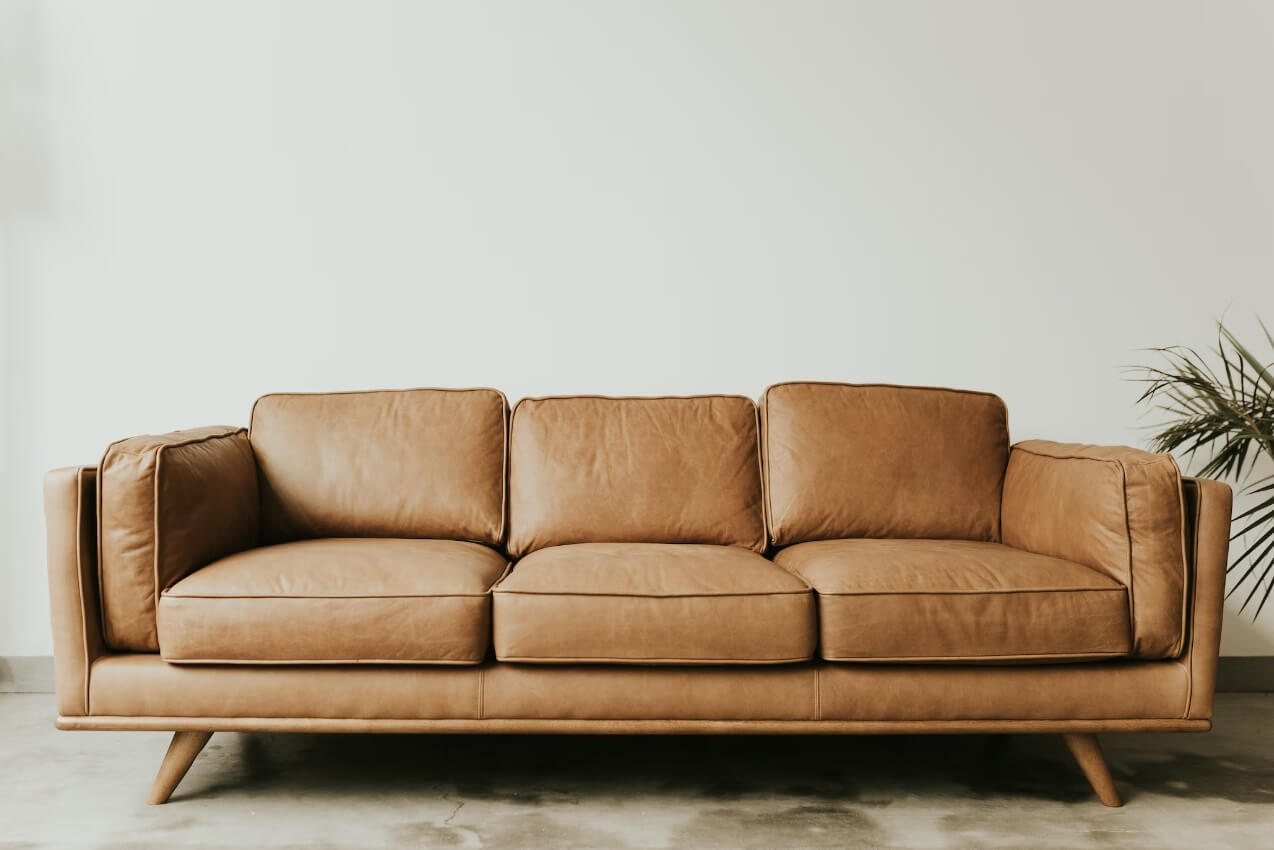Leather sofas are timeless additions to any home, exuding luxury and style, yet they can fall victim to cracking and peeling over time. In this comprehensive guide, we will delve into the reasons behind leather sofa cracking, explore preventative measures, and discuss effective strategies for repairing and restoring your beloved leather furniture. Let's embark on a journey to ensure your leather sofa remains pristine and a symbol of luxury for years to come.
Let's address some frequently asked questions to provide clarity on leather cracking:
- Can cracked leather be repaired? Absolutely! Fibrenew specializes in repairing and restoring cracked leather, bringing it back to its former glory.
- How often should I clean and condition my leather sofa? Aim for a quarterly cleaning and conditioning routine, adjusting based on usage and environmental conditions.
Why does leather crack?
Leather cracking, a common concern for sofa owners, is influenced by various factors. Statistics reveal that nearly 30% of leather furniture experiences cracking or peeling within five years of use, highlighting the issue's prevalence. Environmental elements like humidity and temperature fluctuations significantly contribute to this problem, along with inadequate maintenance and low-quality leather.
The primary cause of leather cracking is the loss of natural oils and moisture, resulting in decreased flexibility and suppleness. Approximately 95% of fully finished leather cracking arises from manufacturing defects or the absorption of body oils and dirt. Manufacturers sometimes overlook proper stretching before applying dye and a protective top coating, causing quick stretching beyond the coating's capacity and resulting in cracks.
Body oils and dirt, mainly from exposed skin areas, are major contributors to leather cracking. These contaminants permeate the top coating, becoming abrasive and breaking down surface dye, leading to visible cracks over time.

You can ensure your leather sofa remains a symbol of elegance for years to come.
Environmental and maintenance issues: Apart from manufacturing and body-related factors, several environmental and maintenance issues contribute to leather cracking:
- Drying Out: Similar to human skin, leather requires moisture to remain soft and flexible. Without proper conditioning, leather can lose its natural oils and become dry.
- Exposure to Sunlight and Heat: Prolonged exposure to direct sunlight or heat can dry out leather, with UV rays breaking down fibers, leading to brittleness.
- Age: As leather ages, it naturally loses some of its natural oils, becoming more susceptible to cracking, especially without regular conditioning.
- Lack of Maintenance: Regular cleaning and conditioning are essential. Without proper care, dirt and oils build up, breaking down leather fibers and making it prone to cracks.
- Improper Storage: Storing leather in overly dry or humid environments can strip moisture or introduce excess moisture, leading to mold or mildew.
- Excessive Stress: Frequent bending, folding, or stretching of leather items can strain the material and lead to cracks over time.
- Exposure to Harsh Chemicals: Certain chemicals can strip leather of its natural oils or damage its fibers, increasing the likelihood of cracks.
Cracking Prevention Cheatsheet
cheatsheet: Prevention is the key to maintaining the longevity of your leather sofa. Consider this your ultimate cheatsheet for safeguarding your investment:
- Regular Cleaning: Use a mild leather cleaner to remove dirt and prevent it from settling into the crevices.
- Conditioning: Apply a high-quality leather conditioner to keep the leather supple and moisturized, reducing the likelihood of cracks.
- Humidity Control: Maintain a consistent level of humidity in your home to prevent leather from drying out and becoming brittle.
- Quality Leather: Invest in high-quality leather furniture from reputable sources to ensure durability.
- Regular Cleaning: Use a soft brush to dust off, wipe with a damp cloth, and, for deeper cleaning, use a leather cleaner. Always test on an inconspicuous spot before applying to the entire surface.
- Condition Regularly: Use a quality leather conditioner without harmful chemicals. Apply in small amounts, rub in a circular motion, and allow to dry naturally.
- Avoid Excessive Sunlight and Heat: Position leather items away from direct sunlight and heat sources to prevent drying out.
- Protect Against Spills and Stains: Wipe off spills immediately and consider using a leather protector spray.
- Proper Storage: Use shaped hangers, fill items with paper or shoe trees, and avoid storing in plastic bags to allow leather to breathe.
- Rotate Usage: If you have multiple leather items, rotate their use to allow each item to rest and regain its natural shape.
- Act Fast on Cracks: Clean gently, apply leather conditioner, and consult professionals if cracks worsen or become deep.
To conclude
What causes leather to crack? Understanding the underlying causes of leather cracking is essential for effective prevention. Low-quality leather, exposure to extreme temperatures, and insufficient maintenance are common culprits. According to a survey conducted by FCILondon, 40% of leather sofa owners identified lack of proper care as the primary reason for cracking and peeling.
How to maintain leather: Maintaining leather involves a combination of cleaning, conditioning, and protective measures. Use a pH-balanced leather cleaner, apply conditioner regularly, and consider using leather protectants to shield against spills and stains.
Causes of cracking and peeling in leather sofas: Peeling and cracking can result from a combination of factors, including:
- Environmental Factors: Drastic changes in temperature and humidity.
- Low-Quality Leather: Poorly treated or bonded leather is more prone to cracking.
- Lack of Maintenance: Ignoring regular cleaning and conditioning.
Preventative measures to avoid cracking and peeling: Follow these proactive steps to keep your leather sofa in top condition:
- Routine Maintenance: Clean and condition your leather regularly.
- Protective Measures: Use leather protectants and keep the sofa away from direct sunlight.
- Invest in Quality: Choose high-quality leather furniture from reputable suppliers.
Leather sofa cracking is a common challenge, but armed with knowledge and proactive measures, you can preserve the elegance and longevity of your leather furniture. Repairing and restoring cracked and peeling leather sofas: If your leather sofa has already experienced cracking, fear not!
Don't let cracks diminish the allure of your leather furniture – take action today for a lasting and beautiful investment.





